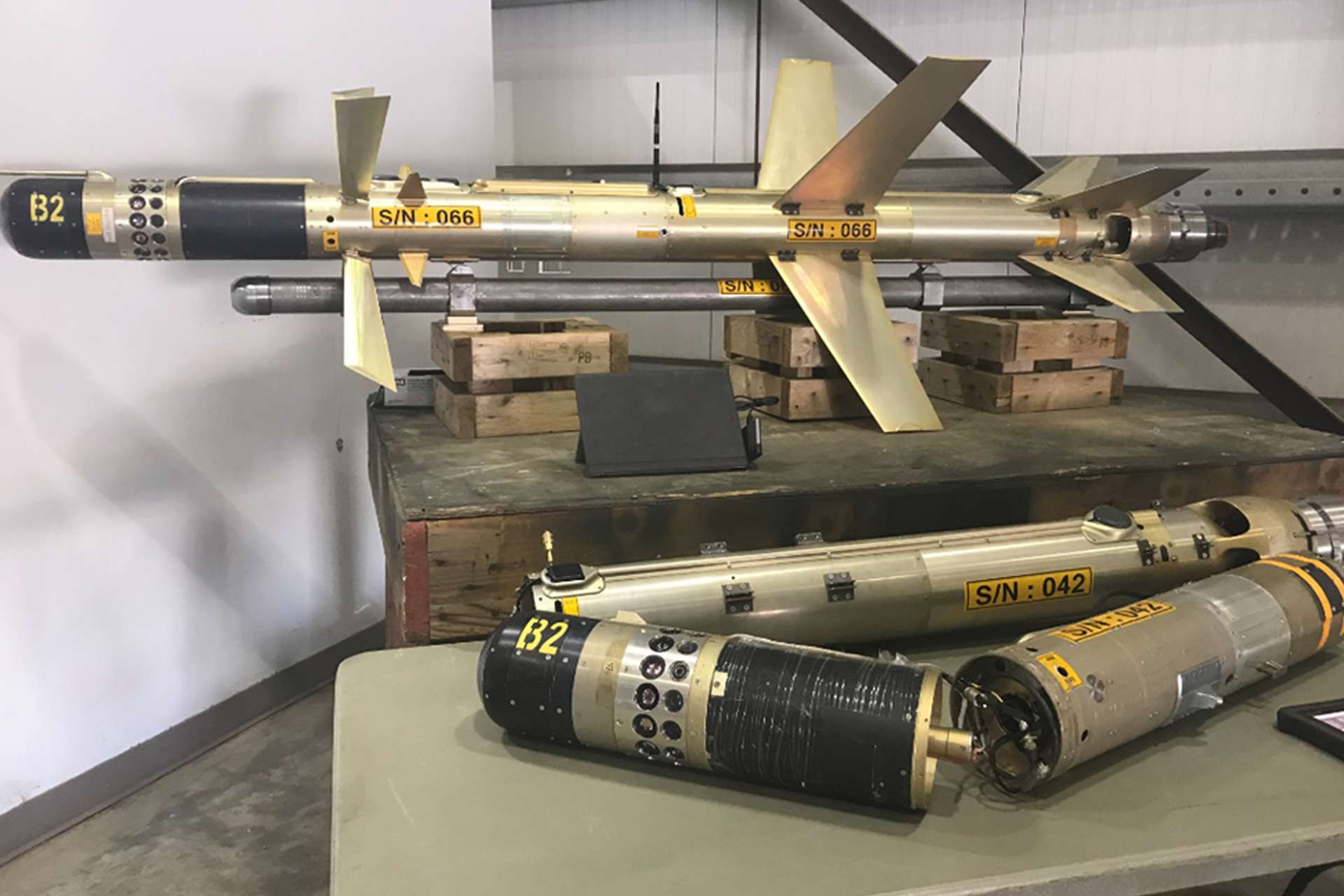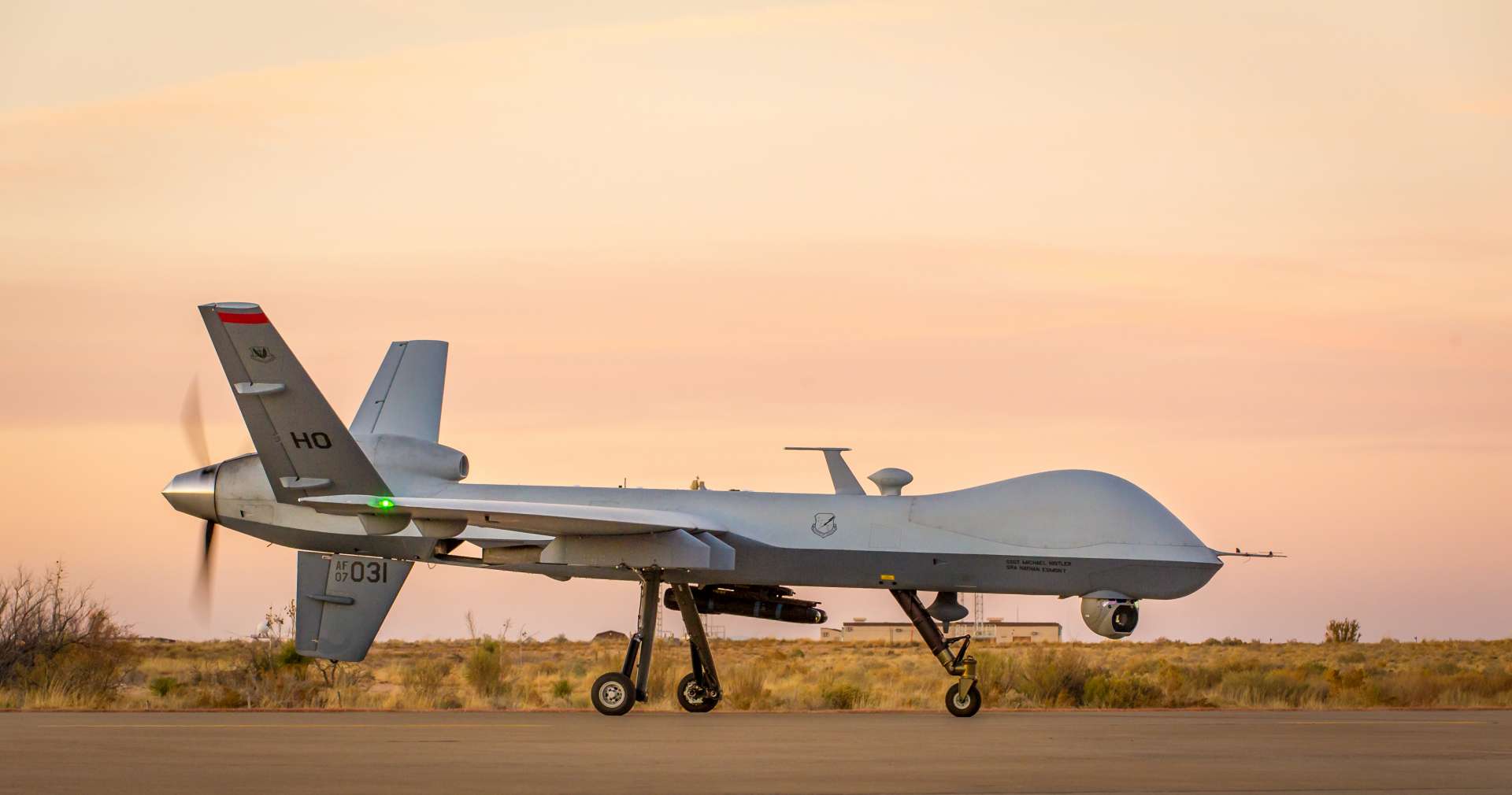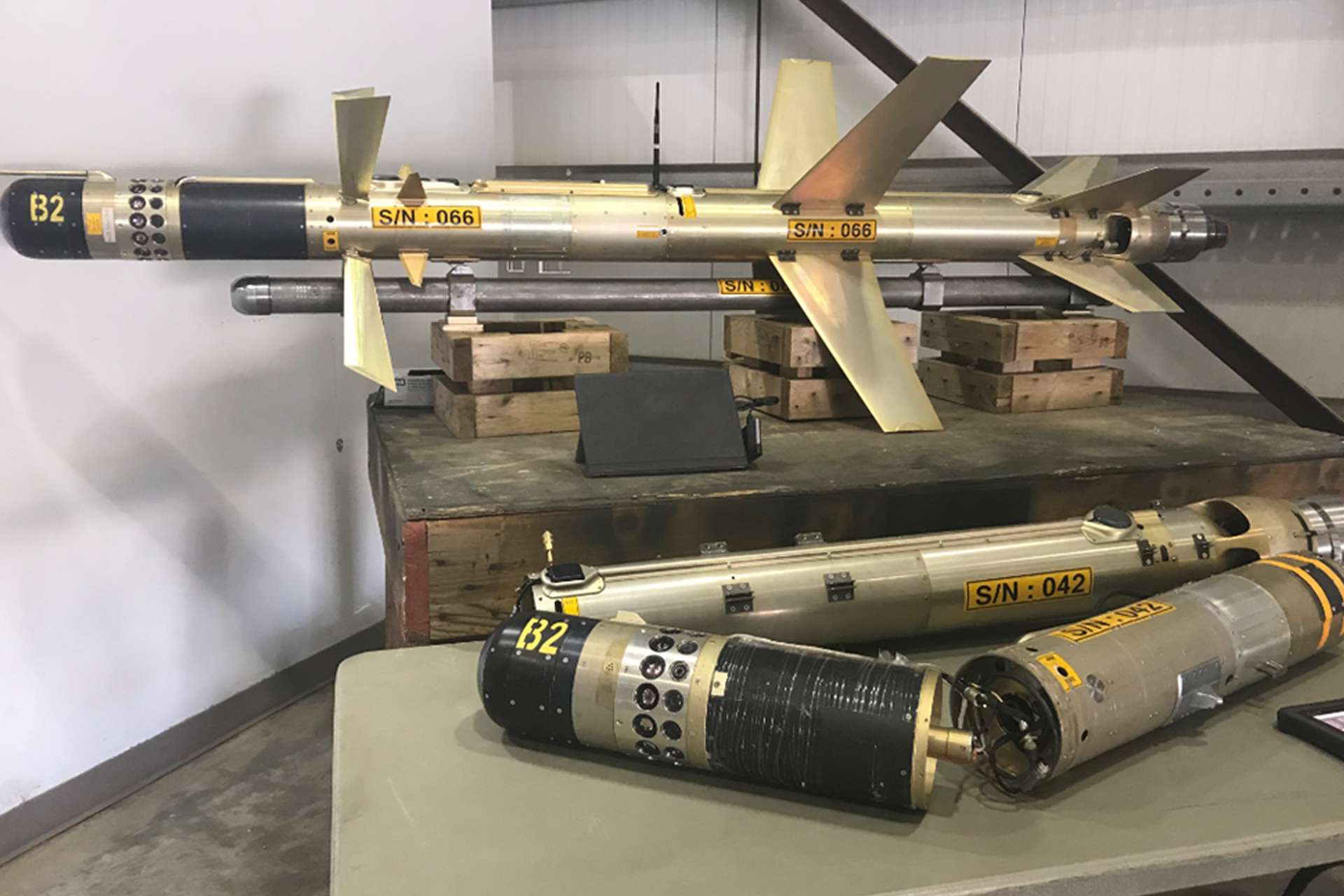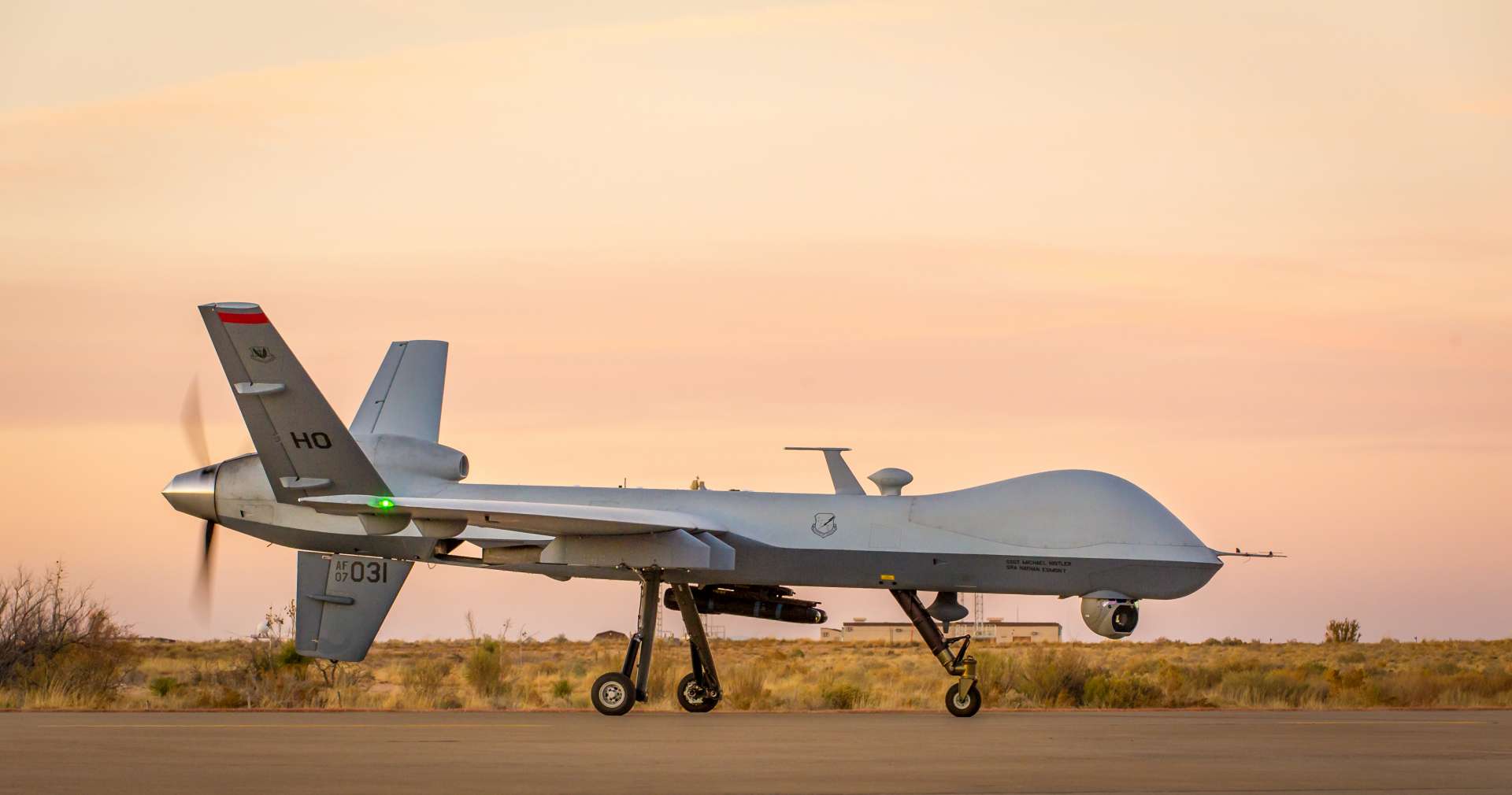Yemen’s Houthis have now destroyed more than $150 Million of American drones after burning a fifth MQ-9 Reaper


{loadposition bannertop}
Breaking news
{loadposition sidebarpub}
On May 17, 2024, the anti-aircraft missile crew of the Ansar Allah movement, commonly known as the Houthis, successfully shot down a fifth American MQ-9 Reaper UAV in Yemeni airspace. The Houthis have now managed to shoot down another valuable American MQ-9 Reaper drone, bringing the total number of American UAVs downed to six, including five MQ-9 Reapers, for a total value of approximately $153.2 million.
Follow Army Recognition on Google News at this link
/* 468×15 data sheet menu top dark green */
google_ad_slot = “3500417247”;
google_ad_width = 468;
google_ad_height = 15;
// ]]>
/* top_468x60_fiche_technique */
google_ad_slot = “2746785843”;
google_ad_width = 468;
google_ad_height = 60;
// ]]>
Following the downing of the 5th MQ-9 Reaper, residents in Wadi Marib burned the wreckage before loyalist army units could arrive (Picture source: Russian social media)
According to available information, this marks the fifth instance where Houthi forces have brought down an American attack and reconnaissance UAV. While American sources claim that the drone fell due to technical problems, there are speculations about the potential use of electronic warfare in this incident, similar to previous occurrences. Some sources suggest that the Iranian Saqr 358 loitering surface-to-air missile may have been used to shoot down this fifth MQ-9 drone.
The Saqr 358 missile, developed by Iran, is a loitering surface-to-air missile that combines features of both a suicide drone and a conventional surface-to-air missile. It is used by groups such as the Houthis, Hezbollah, and Islamic Resistance in Iraq. First revealed in Yemen in 2019, it is designed to operate at altitudes over 10 km with a maximum range of 100 km. The missile includes a solid rocket booster for launch and a turbojet for sustained flight, allowing it to travel at subsonic speeds and loiter to identify and engage targets. It employs an imaging infrared seeker, an inertial navigation system, satellite navigation, and a vertical gyroscope, enabling it to target various aerial threats, including helicopters and drones.
The missile’s design features a cylindrical body with three sets of fins for maneuverability and stability and can be launched from simple ground or vehicle-mounted stands. It incorporates commercially available components, such as the Titan AMT gas turbine and Xsense Technologies’ inertial sensor module. The launch process involves the missile’s booster stage propelling it to sufficient speed, after which the booster detaches, and the gas turbine engine takes over. Infrared sensors and an optical proximity fuse allow the missile to destroy targets with shrapnel even without direct impact.

The Saqr 358 missile, developed by Iran, is a loitering surface-to-air missile that combines features of both a suicide drone and a conventional surface-to-air missile. (US Department of Justice)
Brigadier General Yahya Sari, the official representative of the Yemeni Armed Forces, confirmed that the Houthi air defense forces shot down the MQ-9 Reaper in the northeastern Yemeni province of Marib. This statement could indeed confirm the use of such a surface-to-air missile. According to this statement, the MQ-9 drone was reportedly performing hostile actions in the airspace of Marib province when it was intercepted by a ‘locally produced’ surface-to-air missile. Following its downing, residents in Wadi Marib burned the wreckage before loyalist army units could arrive. The official statement from Brigadier General Yahya Sari noted that the incident took place with the help of the Supreme Air Defense of Yemen, and scenes of the downing would be published later.
The loss of the MQ-9 Reaper adds to a growing list of American UAVs shot down by Houthi forces. Prior to this event, at least five U.S. drones had been downed by the Houthis. These incidents include an MQ-9 Reaper downed on June 7, 2019, by a surface-to-air missile; another MQ-9 Reaper intercepted on November 1, 2017, in western Yemen; an MQ-9 Reaper reported shot down in August 2023; another MQ-9 Reaper shot down on April 25, 2024, over Saada province; and a ScanEagle drone downed in 2023. The cumulative value of these downed drones, including the latest MQ-9 Reaper, is now approximately $153.2 million. Each MQ-9 Reaper is valued at $30 million, while the ScanEagle drone is worth $3.2 million.
Introduced on May 1, 2007, the MQ-9 Reaper is a multi-role, remotely piloted aircraft system used by the US Air Force for intelligence, surveillance, reconnaissance (ISR), and precision strike missions. It features a suite of sensors, including infrared, daylight TV, and laser designators, and can carry a payload of up to 1,700 kg, including Hellfire missiles and laser-guided bombs. The Reaper can operate at altitudes up to 50,000 feet and has a range of over 1,900 kilometers. It is controlled remotely and offers a cruise speed of 313 km/h, thanks to a Honeywell TPE331-10 turboprop engine generating 900 hp.
Introduced in 2005, the smaller ScanEagle is a long-endurance unmanned aerial vehicle designed by Insitu, a Boeing subsidiary, for Intelligence, Surveillance, and Reconnaissance (ISR) operations. It can fly for over 24 hours at altitudes up to 15,000 feet. The ScanEagle is launched using a catapult and recovered with a SkyHook system, which eliminates the need for runways. It is equipped with electro-optical and infrared cameras to provide real-time video and imagery. Its small size, coupled with a weight of only 18 kg, allows for deployment in remote areas without extensive infrastructure, making it suitable for a variety of missions, including battlefield surveillance or maritime patrol, at a cruise speed of 111 km/h.

Introduced on May 1, 2007, the MQ-9 Reaper is a multi-role, remotely piloted aircraft system used by the US Air Force for intelligence, surveillance, reconnaissance (ISR), and precision strike missions. (US Air Force)

{loadposition bannertop}
Breaking news
{loadposition sidebarpub}
On May 17, 2024, the anti-aircraft missile crew of the Ansar Allah movement, commonly known as the Houthis, successfully shot down a fifth American MQ-9 Reaper UAV in Yemeni airspace. The Houthis have now managed to shoot down another valuable American MQ-9 Reaper drone, bringing the total number of American UAVs downed to six, including five MQ-9 Reapers, for a total value of approximately $153.2 million.
Follow Army Recognition on Google News at this link
/* 468×15 data sheet menu top dark green */
google_ad_slot = “3500417247”;
google_ad_width = 468;
google_ad_height = 15;
// ]]>
/* top_468x60_fiche_technique */
google_ad_slot = “2746785843”;
google_ad_width = 468;
google_ad_height = 60;
// ]]>
Following the downing of the 5th MQ-9 Reaper, residents in Wadi Marib burned the wreckage before loyalist army units could arrive (Picture source: Russian social media)
According to available information, this marks the fifth instance where Houthi forces have brought down an American attack and reconnaissance UAV. While American sources claim that the drone fell due to technical problems, there are speculations about the potential use of electronic warfare in this incident, similar to previous occurrences. Some sources suggest that the Iranian Saqr 358 loitering surface-to-air missile may have been used to shoot down this fifth MQ-9 drone.
The Saqr 358 missile, developed by Iran, is a loitering surface-to-air missile that combines features of both a suicide drone and a conventional surface-to-air missile. It is used by groups such as the Houthis, Hezbollah, and Islamic Resistance in Iraq. First revealed in Yemen in 2019, it is designed to operate at altitudes over 10 km with a maximum range of 100 km. The missile includes a solid rocket booster for launch and a turbojet for sustained flight, allowing it to travel at subsonic speeds and loiter to identify and engage targets. It employs an imaging infrared seeker, an inertial navigation system, satellite navigation, and a vertical gyroscope, enabling it to target various aerial threats, including helicopters and drones.
The missile’s design features a cylindrical body with three sets of fins for maneuverability and stability and can be launched from simple ground or vehicle-mounted stands. It incorporates commercially available components, such as the Titan AMT gas turbine and Xsense Technologies’ inertial sensor module. The launch process involves the missile’s booster stage propelling it to sufficient speed, after which the booster detaches, and the gas turbine engine takes over. Infrared sensors and an optical proximity fuse allow the missile to destroy targets with shrapnel even without direct impact.

The Saqr 358 missile, developed by Iran, is a loitering surface-to-air missile that combines features of both a suicide drone and a conventional surface-to-air missile. (US Department of Justice)
Brigadier General Yahya Sari, the official representative of the Yemeni Armed Forces, confirmed that the Houthi air defense forces shot down the MQ-9 Reaper in the northeastern Yemeni province of Marib. This statement could indeed confirm the use of such a surface-to-air missile. According to this statement, the MQ-9 drone was reportedly performing hostile actions in the airspace of Marib province when it was intercepted by a ‘locally produced’ surface-to-air missile. Following its downing, residents in Wadi Marib burned the wreckage before loyalist army units could arrive. The official statement from Brigadier General Yahya Sari noted that the incident took place with the help of the Supreme Air Defense of Yemen, and scenes of the downing would be published later.
The loss of the MQ-9 Reaper adds to a growing list of American UAVs shot down by Houthi forces. Prior to this event, at least five U.S. drones had been downed by the Houthis. These incidents include an MQ-9 Reaper downed on June 7, 2019, by a surface-to-air missile; another MQ-9 Reaper intercepted on November 1, 2017, in western Yemen; an MQ-9 Reaper reported shot down in August 2023; another MQ-9 Reaper shot down on April 25, 2024, over Saada province; and a ScanEagle drone downed in 2023. The cumulative value of these downed drones, including the latest MQ-9 Reaper, is now approximately $153.2 million. Each MQ-9 Reaper is valued at $30 million, while the ScanEagle drone is worth $3.2 million.
Introduced on May 1, 2007, the MQ-9 Reaper is a multi-role, remotely piloted aircraft system used by the US Air Force for intelligence, surveillance, reconnaissance (ISR), and precision strike missions. It features a suite of sensors, including infrared, daylight TV, and laser designators, and can carry a payload of up to 1,700 kg, including Hellfire missiles and laser-guided bombs. The Reaper can operate at altitudes up to 50,000 feet and has a range of over 1,900 kilometers. It is controlled remotely and offers a cruise speed of 313 km/h, thanks to a Honeywell TPE331-10 turboprop engine generating 900 hp.
Introduced in 2005, the smaller ScanEagle is a long-endurance unmanned aerial vehicle designed by Insitu, a Boeing subsidiary, for Intelligence, Surveillance, and Reconnaissance (ISR) operations. It can fly for over 24 hours at altitudes up to 15,000 feet. The ScanEagle is launched using a catapult and recovered with a SkyHook system, which eliminates the need for runways. It is equipped with electro-optical and infrared cameras to provide real-time video and imagery. Its small size, coupled with a weight of only 18 kg, allows for deployment in remote areas without extensive infrastructure, making it suitable for a variety of missions, including battlefield surveillance or maritime patrol, at a cruise speed of 111 km/h.

Introduced on May 1, 2007, the MQ-9 Reaper is a multi-role, remotely piloted aircraft system used by the US Air Force for intelligence, surveillance, reconnaissance (ISR), and precision strike missions. (US Air Force)





